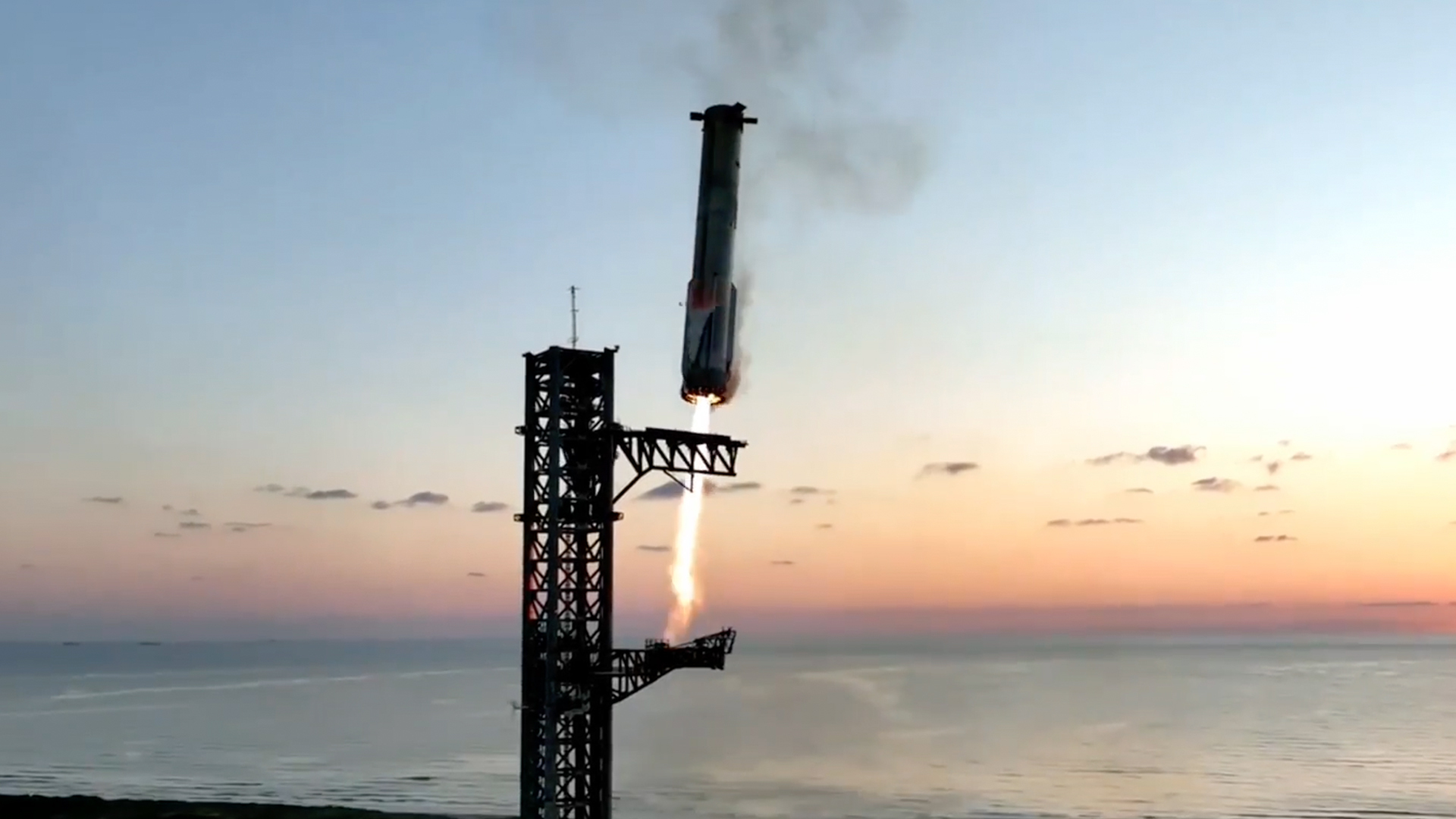
SpaceX's historic rocket catch earlier this month was even more dramatic than it looked.
That catch occurred on Oct. 13, during the fifth test flight of SpaceX's Starship megarocket. Starship's huge first-stage booster, known as Super Heavy, came back to Earth about seven minutes after liftoff, nestling next to its launch tower, which secured the rocket with its "chopstick" arms.
But that epic moment almost didn't happen: Super Heavy was just one second away from aborting the launch-tower landing and crashing into a patch of nearby ground, SpaceX engineers told company founder and CEO Elon Musk recently.
Musk revealed part of that conversation on X on Friday (Oct. 25), in a post that showed the billionaire's progress in the online game Diablo IV. That post depicted three minutes of Musk's Diablo IV gameplay, which occurred while he was talking to three unnamed SpaceX engineers about the Starship test flight.
"I wanted to be really up-front about scary sh*t that happened and what we're doing about it, because I think that's our focus on getting to Flight 6," one of those engineers tells Musk at the beginning of the posted conversation. That focus, the engineer adds, is "on booster risk reduction, rather than Ship envelope expansion." (Ship is the 165-foot-tall, or 50-meter, Starship upper stage.)
Related: Starship and Super Heavy explained
The engineer then goes into detail about the "scary sh*t."
"We had a misconfigured spin gas abort that didn't have quite the right ramp-up time for bringing up spin pressure," he explains. "And we were one second away from that tripping and telling the rocket to abort and try to crash into the ground next to the tower instead of [landing at] the tower — like, erroneously tell a healthy rocket to not try that catch."
"Wow," Musk says as he hears the news.
"We knew we had a whole bunch of new aborts and commit criteria that we tried to double-check really well," the engineer continues. "I think our concern was well-placed, and one of these came really close to biting us."
"This was one of the reasons we were thinking about delaying the launch," another engineer adds.
"If we delay one day, we would, like, go check things some more," one of the engineers says, speculating about how the preparations for Flight 5 could have been different. "I don't know if we would've found this one, but just to — "
"We were scared of that before launch," the third engineer interjects.
"Well, we were scared about the fact that we had 100 aborts that were not super-trivial but ultra-well-grounded, and we didn't do as good of a review as we did for pre-Flight 1 liftoff," one of the engineers responds.
The prep work for Starship's upcoming sixth test flight aims to achieve "a reasonable balance of speed and risk mitigation, on the booster specifically," one of the engineers says a bit later.
The conversation also touches on some damage that Super Heavy endured during Flight 5. A cover protecting a longitudinal structure on the booster called a chine came off during its descent — and that could easily have scuttled the tower catch as well.
"We were worried about these spot-weld margins on chine skin before flight," one of the engineers says. "We wouldn't have predicted the exact right place, but this cover that ripped off was right on top of a bunch of the single-point-failure valves that must work during the landing burn. Thankfully, none of those or the harnessing got damaged, but we ripped this chine cover off over some really critical equipment right as landing burn was starting. We have a plan to address that."
SpaceX is developing the 400-foot-tall (122 m) Starship, the biggest and most powerful rocket ever built, to help humanity colonize the moon and Mars.
The stainless-steel vehicle is designed to be fully and rapidly reusable, which is key to what SpaceX views as its transformative potential. Launch-tower catches are a big part of this grand vision; the company aims to bring both Super Heavy and Ship down directly on the launch mount, allowing for faster and more efficient inspection, refurbishment and reflight.







